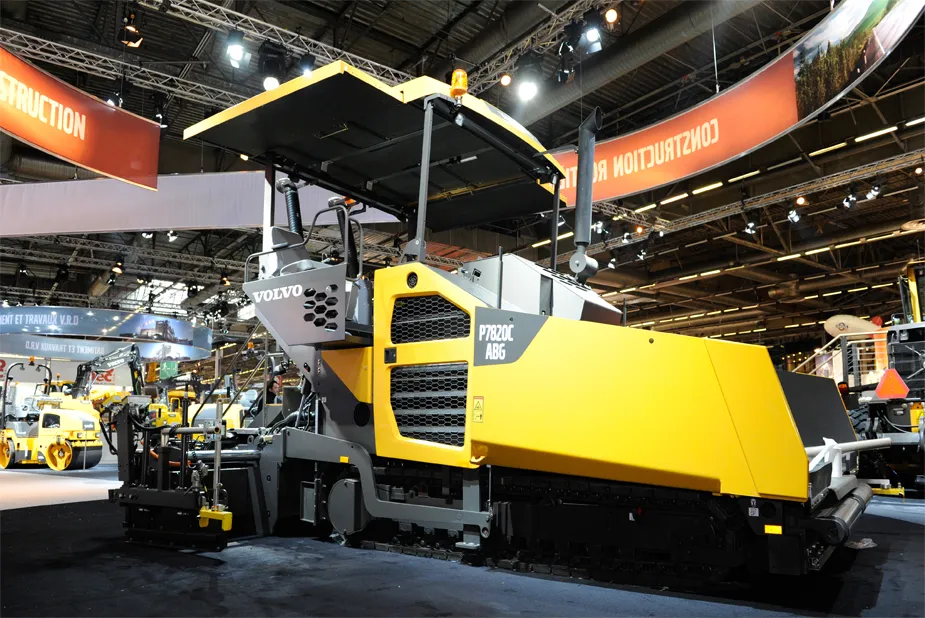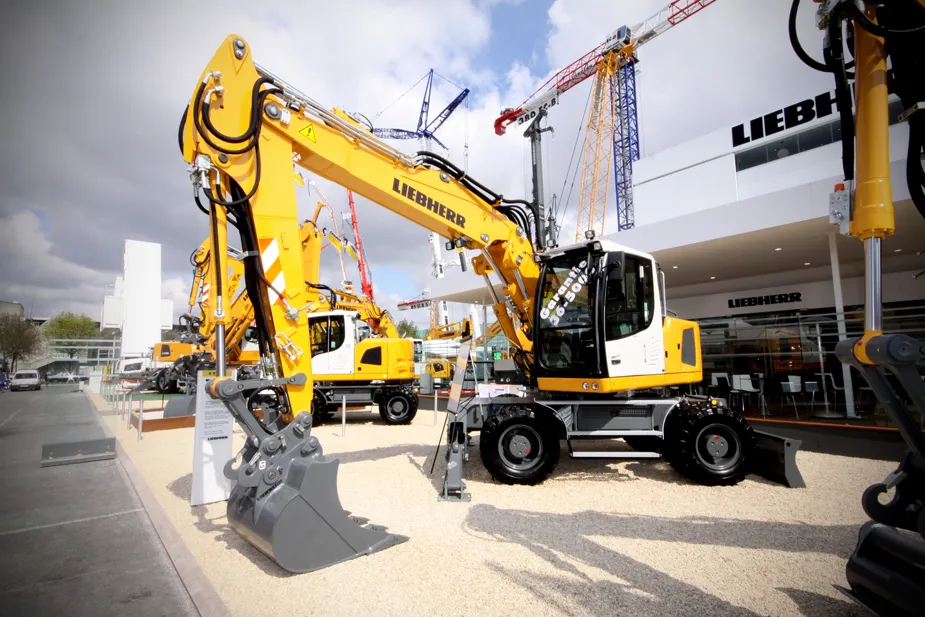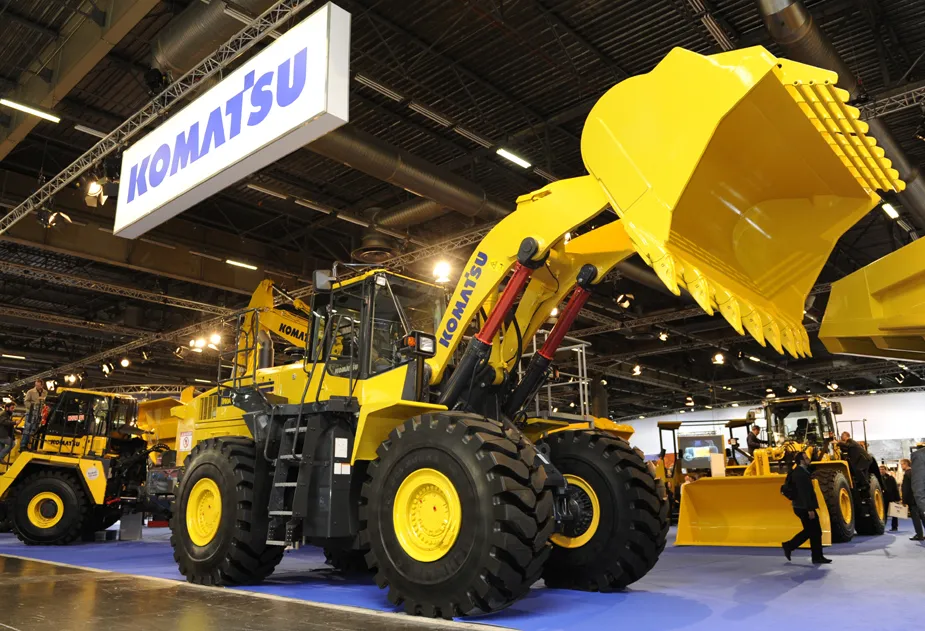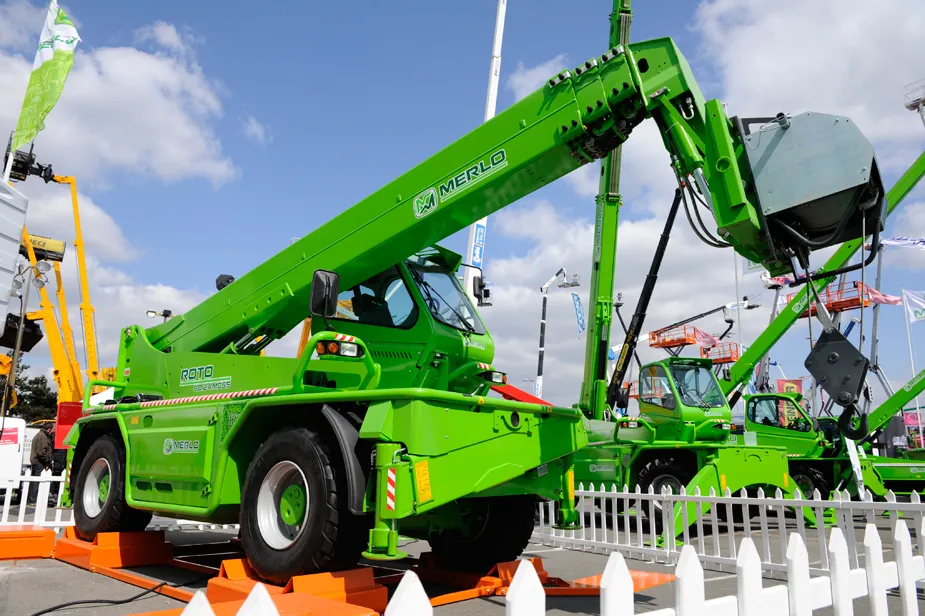The latest tracked asphalt pavers from Volvo Construction Equipment get independent travel drives and electronic traction control to help maintain productivity on slopes and around corners.
The P8820C ABG can pave widths from 2.5m up to 13m and handle 1,100tonnes/hour, while the P7820C ABG paves up to 11m and places up to 900tonnes/hour.
January 6, 2017
Read time: 2 mins

%$Linker: 2 Internal 2 4802 0 oLinkInternal <span class="oLinkInternal"><span class="oLinkInternal">RSS</span></span> Road Paving and Recycling false /event-news/intermat-2012/rss/road-paving-and-recycling/ true false %>The latest tracked asphalt pavers from 2394 Volvo Construction Equipment get independent travel drives and electronic traction control to help maintain productivity on slopes and around corners.
The P8820C ABG can pave widths from 2.5m up to 13m and handle 1,100tonnes/hour, while the P7820C ABG paves widths up to 11m and places up to 900tonnes/hour.
For Europe the pavers come with Volvo’s latest Stage IIIB-compliant six-cylinder D8 engine delivering 175kW in the P7820C and 200kW in the P8820C. In most operating conditions the Smart Power system reduces engine power and speed, resulting in fuel savings of up to 30% as well as halving noise levels.
The operator’s central control panel can be swivelled, tilted and extended and houses the Electronic Pavers Management II system (EPM II), which controls the paving processes.
Wide rubber clad crawler tracks have individual (electronically controlled) drives and the electronics system monitors track movement and controls motor response for accurate straight line and fixed radius work.
EPM II’s Settings Manager allows operators to save settings for future recall when similar conditions are encountered and thereby reduce set-up time. The electronic system also monitors fuel consumption and alerts the operator when maintenance is due.
2 Internal 2 4824 0 oLinkInternal <span class="oLinkInternal"><span class="oLinkInternal">View more videos</span></span> Video false /event-news/intermat-2012/video/ true false %>
The P8820C ABG can pave widths from 2.5m up to 13m and handle 1,100tonnes/hour, while the P7820C ABG paves widths up to 11m and places up to 900tonnes/hour.
For Europe the pavers come with Volvo’s latest Stage IIIB-compliant six-cylinder D8 engine delivering 175kW in the P7820C and 200kW in the P8820C. In most operating conditions the Smart Power system reduces engine power and speed, resulting in fuel savings of up to 30% as well as halving noise levels.
The operator’s central control panel can be swivelled, tilted and extended and houses the Electronic Pavers Management II system (EPM II), which controls the paving processes.
Wide rubber clad crawler tracks have individual (electronically controlled) drives and the electronics system monitors track movement and controls motor response for accurate straight line and fixed radius work.
EPM II’s Settings Manager allows operators to save settings for future recall when similar conditions are encountered and thereby reduce set-up time. The electronic system also monitors fuel consumption and alerts the operator when maintenance is due.
%$Linker:
Hall: 6 Stand: C041
%$Linker:







